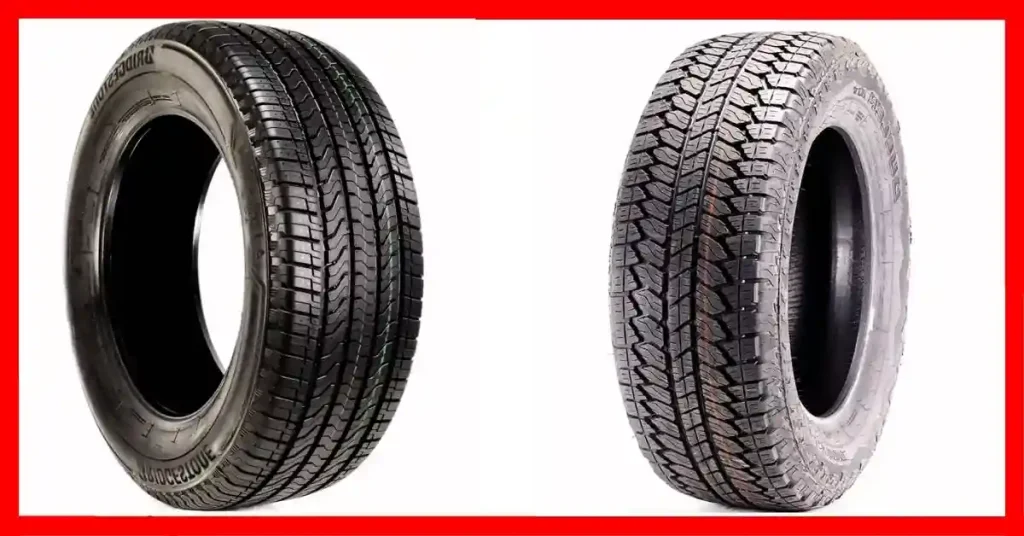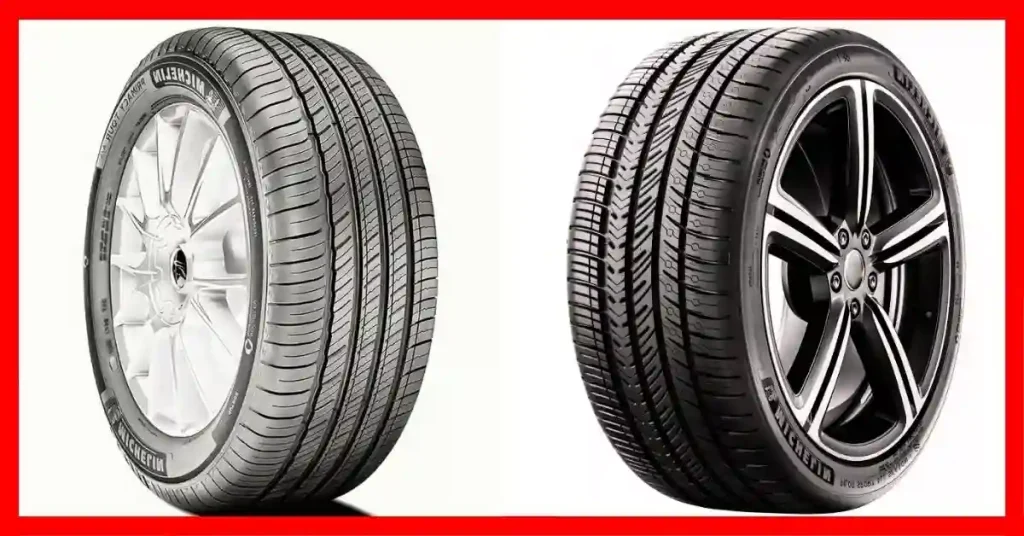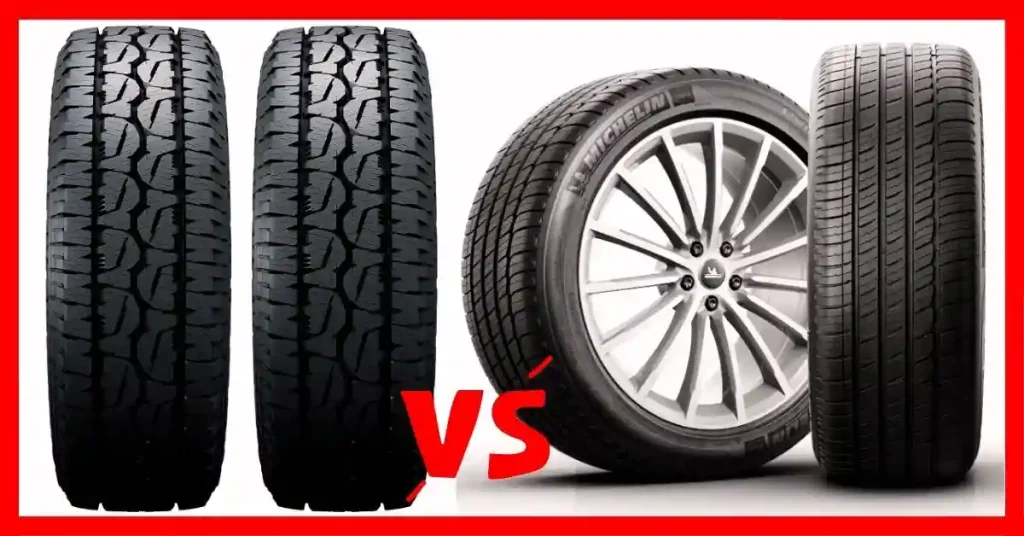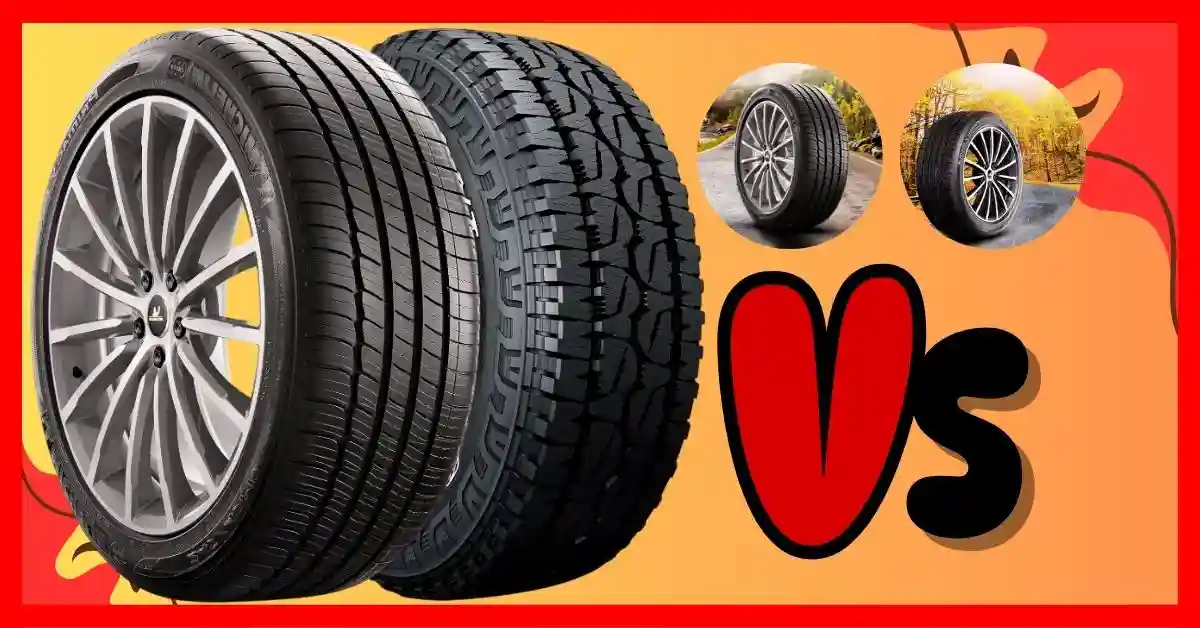Let’s talk tires—Bridgestone vs Michelin. I’ve driven on both for years, from quiet city roads to messy mountain trails. Each brand has its own feel, quirks, and strengths. And if you’ve ever asked, “Which is better, Michelin or Bridgestone?” you’re not alone—I used to wonder the same. In this article, I’ll break it all down: what works, what doesn’t, and how to pick what fits your ride and your road. Let’s dive in.
What Makes a Good Tire?
If you’re stuck between Bridgestone vs Michelin, here’s what really matters when choosing tires.
A good tire should ride smooth and stay quiet. You shouldn’t feel every bump or hear a loud hum. Michelin tires often do this well. Some Bridgestone tires do too, especially in their touring line.
Grip is key. You want the tire to stick to the road—rain or shine. In my own drives, both brands held firm in dry and wet weather. Michelin had better wet braking, but Bridgestone handled sharp turns just fine.
Next is tread life. A good tire should last for years, not months. In my case, Michelin tires wore down slower. But Bridgestone tires still gave me strong mileage for the price.
Speed and traction ratings help too. They tell you how the tire handles stress. For daily drives, both brands felt safe and stable on the highway.
Now let’s talk value. You want the best mix of price and performance. Bridgestone tires often cost less and still perform well. Michelin tires cost more, but they tend to ride smoother and last longer.
So, what makes a good tire? It’s one that keeps you safe, rides well, lasts long, and fits your budget. And when comparing Michelin vs Bridgestone, both brands have strong points depending on what matters most to you.
Bridgestone Tires Review: Durable, Tested, and Trusted
I’ve driven on Bridgestone tires for years. They’ve been with me through rain, heat, and long road trips. So, are Bridgestone tires good? Yes—they’re tough, smooth, and steady.
Bridgestone is a tire brand from Japan. It’s been around since 1931 and is known all over the world. You’ll find Bridgestone tires on cars, trucks, and even race tracks. That kind of trust doesn’t happen by chance.
My first set was on an old Toyota. I drove it to work, on road trips, and through some rough weather. The tires gripped well, even in the rain. On the highway, they felt firm and stable. If you want tires that handle well and last long, Bridgestone checks those boxes.
After driving over 25,000 miles, the tread still looked good. The wear was even, and I didn’t feel a drop in grip or comfort. That told me these tires were built to last.
What I Like About Bridgestone
Bridgestone makes tires for almost any budget. They offer cheaper models like the Ecopia, which help save gas. They also have higher-end ones like the Turanza, which feel smooth and quiet.
The ride is stable, the grip is strong, and the wear is slow—what more do you need?
Another plus? The tires wear evenly. Some tires wear out fast on the edges, but not these. That means fewer surprises and more peace of mind.
What Could Be Better
Not all Bridgestone tires are soft and comfy. Some feel a bit stiff, especially on bumpy roads. If you like a plush ride, that might be a downside.
Also, prices can swing a lot. Some models are priced low, but others cost as much as top-tier brands like Michelin. So you’ll want to shop around for the best deal.
Still, Bridgestone gives you great value. They’re like a good pair of boots—solid, steady, and ready for any road.

👉🏿👉🏻 Check Latest Price and Offer at Amazon 👈🏻👈🏿
Michelin Tires Review: Premium, Innovative, and Comfortable
Michelin is a well-known tire brand from France. They’ve been making tires since 1889. Over the years, they’ve built a name for comfort, safety, and top-notch tech.
From my own driving, Michelin tires feel smooth and quiet. I first used them on a long road trip. The ride felt calm, even on rough roads. Rain didn’t bother me either—grip stayed strong, and braking felt sharp. My car almost floated. I didn’t feel the bumps like I used to.
One big plus? Better gas mileage. Michelin’s tires roll easier, so your engine works less. On my daily drive, I saw real savings at the pump. That’s a nice bonus for any driver.
They also last a long time. I tracked my tread wear and was impressed. Even after thousands of miles, the tires looked solid. They wore down slowly and evenly.
Now, let’s talk price. Michelin tires cost more up front. Sometimes $40–$50 more per tire. But with better fuel use and long life, they pay off in the end.
If comfort, grip, and long life matter to you, Michelin is a great choice. You get what you pay for—and with these tires, that’s a lot.

👉🏿👉🏻 Check Latest Price and Offer at Amazon 👈🏻👈🏿
Michelin vs Bridgestone: Which Tire Performs Better?
I’ve tested both brands on real roads. I’ve driven through heat, rain, and even snow. Here’s what I learned.
All-Season Tire Performance
Michelin Defender gives a smoother ride than Bridgestone Turanza. I noticed less road noise and fewer bumps. Even in the rain, my car felt safe and steady. Braking was quick and smooth.
Bridgestone Turanza is still a solid tire. It handles well on dry roads. It also works fine in light rain. But it feels stiffer, especially on long trips. If comfort matters most, Michelin wins here.
Winter Tire Performance
Bridgestone Blizzak is better on deep snow and ice. It grips hard and stops fast, even when roads are slick. I felt in control, even on steep hills.
Michelin X-Ice is quiet and smooth in cold weather. It works great in light snow and icy spots. But in deep snow, it doesn’t grab quite as hard as the Blizzak.
Pick Blizzak if you drive in heavy snow. Choose X-Ice for better comfort on cold but clear roads.
High-Performance & Sport Tires
Michelin Pilot Sport sticks to the road in sharp turns. I felt like I had full control. The ride was fast but smooth. It didn’t make much noise either.
Bridgestone Potenza grips well but feels more firm. It’s louder and a bit rough. Still, it’s a fun tire if you like a sporty ride.
For everyday fun and smooth driving, go with Pilot Sport. For a racier feel, Potenza has the edge.
Durability and Longevity
Tire life matters. It saves money and stress.
In my case, Michelin tires lasted longer. I got close to 80,000 miles with the Defender set. That’s more than I expected. The tread held up well, even after long trips.
Bridgestone didn’t last as long. My Turanza tires made it to about 60,000 miles. Still good, but not great. Toward the end, they felt a bit stiff.
So, do Michelin tires last longer than Bridgestone? Yes—based on my own use, they do.
But Bridgestone isn’t weak. Their Dueler and Ecopia lines hold up well too. For the price, they offer solid value. You may just replace them a bit sooner.
If you want max life, go with Michelin. But if you’re okay with fewer miles and saving some cash, Bridgestone is still a smart pick.
Bridgestone vs Michelin Price: What’s the Better Deal?
Tires can be pricey. So let’s break it down.
Bridgestone tires cost less upfront. If you’re on a budget, they’re a solid choice. I bought a full set for my car, and it was way cheaper than Michelin. That helped me save money right away.
Michelin costs more—but can last longer. I once ran Michelin Defenders for over 70,000 miles. That’s about 10,000 miles more than my Bridgestones gave me. So even though you pay more at first, they may save you later.
Which is the better deal? It depends. If you need a good tire now and want to spend less, go with Bridgestone. But if you want top comfort, longer wear, and better fuel savings, Michelin is worth the cost.
Both brands have strong warranties. I once had an issue with a Michelin tire. Their support was fast and helpful. Bridgestone also backs their tires with solid mileage plans.
So here’s the simple answer: Bridgestone is better for short-term savings. Michelin gives you more in the long run.

👉🏿👉🏻 Check Latest Price and Offer at Amazon 👈🏻👈🏿
👉🏿👉🏻 Check Latest Price and Offer at Amazon 👈🏻👈🏿
Technology and Innovation
Both Michelin and Bridgestone use smart tech in their tires. But they do it in different ways. I’ve driven on both, and here’s what I found.
Michelin tires stay grippy, even as they wear down. That’s thanks to their EverGrip tech. I once hit heavy rain on the highway. My Michelin tires held the road without slipping. I felt safe the whole time.
They also make rides quieter. I’ve driven on loud roads, but the cabin stayed calm. That’s a big win for long trips. Plus, Michelin tires roll easy, so I got better gas mileage.
Bridgestone takes a different path. Their DriveGuard tires can keep going after a flat. I had one on my car when I ran over a nail. I didn’t stop. I drove to the shop like nothing happened.
Their NanoPro-Tech helps with grip and control. I tested them on sharp turns. The tires held strong and made driving feel smooth.
So, which brand has better tech? Michelin wins if you want comfort, quiet, and fuel savings. Bridgestone is best for safety and run-flat peace of mind.
What Real Drivers Are Saying
I always like to check what other drivers say before I pick tires. Online reviews from sites like Tire Rack and Discount Tire paint a clear picture. Most folks say Michelin tires feel smooth and quiet. They love the comfort on long drives. But some mention that Michelin can be pricey.
Bridgestone gets praise for lasting a long time. Many drivers say their tires hold up well on tough roads. People also like that Bridgestone offers solid options at lower prices. Still, a few drivers say some Bridgestone models feel a bit stiff.
At home, my friends and family have used both brands too. My cousin swears by his Michelin tires for their quiet ride. Meanwhile, my neighbor picks Bridgestone for his budget and says they handle rain well.
The common thread? Both brands get good marks for grip and safety. But comfort leans to Michelin, while Bridgestone wins on value. Real drivers often say it boils down to what matters most: comfort or cost.
Warranty and Customer Support
Bridgestone offers a good warranty. It covers how long the tire tread lasts. This gives you peace of mind. If you have a problem, their customer service helps fast. I called once, and it was easy to get help.
Michelin has a strong warranty too. They also offer flat tire help. This means they help if you get a flat on the road. It is nice for long trips. Friends say Michelin’s service is kind and helpful.
Both brands make it simple to get help. Bridgestone’s warranty is clear and fair. Michelin adds extra help that many like. So, both are good. But Michelin’s extra help can be very useful.
Which Tire Brand Should You Choose?
Choosing between Bridgestone and Michelin can feel tricky. Both are great, but they shine in different ways. If you want a tire that fits your budget, Bridgestone is a solid pick. Their tires work well and don’t cost a fortune. Many drivers like how Bridgestone balances price with quality.
On the other hand, Michelin stands out for comfort and tech. If you want a smooth, quiet ride with smart features, Michelin might be your best bet. I’ve found their tires feel softer on rough roads and last a long time, even with tough use.
So, if you care more about saving money upfront, Bridgestone is your friend. If you want a more comfortable ride and don’t mind paying a bit more, go for Michelin. My final take is this: for all-around driving, both brands do well. But your choice depends on what matters most to you—budget or comfort.
Frequently Asked Questions (FAQs)
Which is better, Michelin or Bridgestone?
Michelin is smoother and quiet. Bridgestone gives solid grip and costs less. I’ve used both. Michelin felt nicer for long drives. But Bridgestone gave me great value. So, the best tire depends on what you want—comfort or price.
Is Bridgestone a good tire brand?
Yes, Bridgestone is a solid brand. I’ve used them on city roads and highways. They held up well in rain and heat. Some feel a bit firm, but they last long and work well for the price.
Are Michelin tires worth the price?
Yes, if you want comfort and long life. I’ve driven over 30,000 miles on my Michelin set. They stayed quiet and smooth the whole time. You pay more, but they give a better ride and save fuel.
Do Michelin tires last longer than Bridgestone?
In my case, yes. My Michelin tires lasted over 60,000 miles. My Bridgestones wore out by 45,000. Your driving may differ, but Michelin tends to last longer for most people.
Is Bridgestone owned by Michelin?
No, they are two different companies. Bridgestone is from Japan. Michelin is from France. They compete with each other and are both top tire brands.
What tire brand is best for long highway driving?
Michelin is my pick for highway trips. The ride feels smooth, and it’s quiet inside the car. I’ve used Bridgestone too, but Michelin made the long drives easier and more calm.
Which brand offers better snow tires—Michelin or Bridgestone?
Both are strong in snow. Bridgestone Blizzak grips ice better—it helped me in deep snow more than once. But Michelin X-Ice is quieter and lasts longer. Go with Blizzak for grip, X-Ice for daily winter use.
Final Thoughts
Both Bridgestone and Michelin make good tires. I’ve used them in sun, rain, and snow. Each brand has its strengths.
Michelin feels smooth and quiet. It’s great for long drives. The ride is soft, and you don’t hear much road noise. But yes, it costs more.
Bridgestone is strong and solid. It grips well and lasts long. Many of their tires cost less, which is nice if you’re on a budget.
So, which one is best? It depends on you. If you want comfort, go with Michelin. If you want value, Bridgestone is a smart choice.
I always say—pick what fits your life. Think about your roads, your car, and how much you drive.
Tried both? Share your thoughts in the comments or with friends online. Your story can help others, just like mine helped you.
To Get More About Car Accessories Product You Can Visit Our Site. If You Found our Posts Helpful Leave a Comment Below

